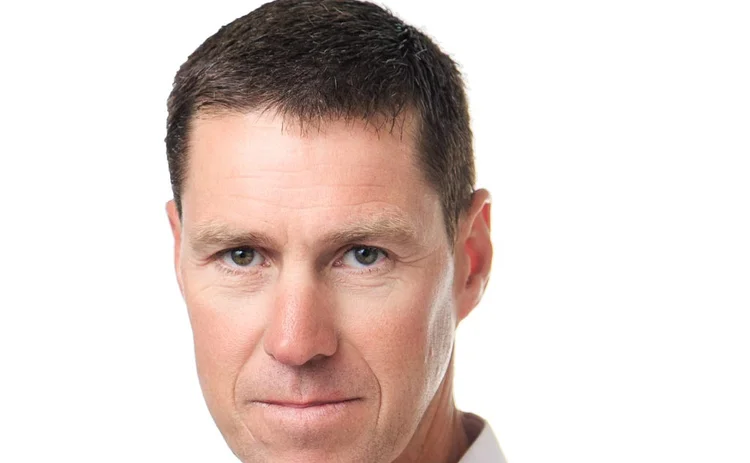November 2016: Falling in Love with Julia

I remember buying my first cell phone back in 1994. It was a trusty old Siemens— yes, Siemens did make phones once upon a time, and yes, this phone was the epitome of a first-generation cell phone: large clunky numbers; a matchbox-size, luminous green screen; and the weight of a house brick. But boy, I loved that phone, even though initially it turned out to be a pointless acquisition. You see, cellular technology was in its nascence back in South Africa more than two decades ago and no one had my number. In fact no one else even had a phone. To say that my phone didn’t ring for the first three months is no exaggeration — it literally lay silent, except for when I phoned it periodically from my landline to ensure that I hadn’t bought a dud. Also, calls between cell phones and from landlines to cell phones were prohibitively expensive. And so, naturally, adoption was slow.
The Viber app is a similar story. Like WhatsApp, it was released in 2010, and featured arguably better functionality — it supported video calls for example — but for some reason WhatsApp became the communication app of choice in the UK, and by so doing relegated text messages (SMSs) to the scrapheap of history. Maybe it has something to do with WhatsApp being born in California, while Viber’s roots are in Tel Aviv, although I doubt whether consumers these days really care about where a technology is developed. I don’t know of a single friend of mine in the UK or South Africa who doesn’t use WhatsApp. Even my Mum uses it! Anyway, whatever the reason, Viber wasn’t able to establish a critical mass of support, while WhatsApp did, culminating in its acquisition by Facebook in February 2014 for just under $20 billion.
Which brings me to Julia and Anthony Malakian’s outstanding feature about this nascent programming language. That Julia has a bright future is without doubt — our industry will absolutely fall in love with it (her). However, the more pertinent question on everyone’s lips right now is when Julia’s support will reach a critical mass, and the extent of that love affair. Will it be a secret liaison conducted discretely behind closed doors, or will it be played out in front of the world’s media? Perhaps, for the time being, it will be the former, until her proponents are able to offer the same depth and breadth of support and ancillary services enjoyed by the industry’s most popular programming languages.
As Tony concludes in his feature, “it takes a village to raise a child.” And while Julia’s community might not yet resemble a fully fledged village, it certainly features a cluster of dwellings that might, in some circles, qualify as a growing hamlet.
Only users who have a paid subscription or are part of a corporate subscription are able to print or copy content.
To access these options, along with all other subscription benefits, please contact info@waterstechnology.com or view our subscription options here: https://subscriptions.waterstechnology.com/subscribe
You are currently unable to print this content. Please contact info@waterstechnology.com to find out more.
You are currently unable to copy this content. Please contact info@waterstechnology.com to find out more.
Copyright Infopro Digital Limited. All rights reserved.
As outlined in our terms and conditions, https://www.infopro-digital.com/terms-and-conditions/subscriptions/ (point 2.4), printing is limited to a single copy.
If you would like to purchase additional rights please email info@waterstechnology.com
Copyright Infopro Digital Limited. All rights reserved.
You may share this content using our article tools. As outlined in our terms and conditions, https://www.infopro-digital.com/terms-and-conditions/subscriptions/ (clause 2.4), an Authorised User may only make one copy of the materials for their own personal use. You must also comply with the restrictions in clause 2.5.
If you would like to purchase additional rights please email info@waterstechnology.com
More on Emerging Technologies
As trading firms embrace AI, so do hackers
According to a Google cybersecurity report, cybercriminals are turning to AI to sharpen their attacks.
AI & data enablement: A looming reality or pipe dream?
Waters Wrap: The promise of AI and agents is massive, and real-world success stories are trickling out. But Anthony notes that firms still need to be hyper-focused on getting the data foundation correct before adding layers.
Waters Wavelength Ep. 343: Broadridge’s Jason Birmingham
This week, Jason Birmingham of Broadridge talks with Tony about the importance of fundamentals as technology rapidly evolves.
Data standardization is the ‘trust accelerator’ for broader AI adoption
In this guest column, data product managers at Fitch Solutions explain AI’s impact on credit and investment risk management.
BNY inks AI deal with Google, Broadridge moves proxy voting to AWS, Expero delivers ICE market data, and more
The Waters Cooler: TSX Venture Exchange data hits the blockchain, SmartTrade acquires Kace, and garage doors link to cloud costs in this week’s news roundup.
Everyone wants to tokenize the assets. What about the data?
The IMD Wrap: With exchanges moving market data on-chain, Wei-Shen believes there’s a need to standardize licensing agreements.
Google, CME say they’ve proved cloud can support HFT—now what?
After demonstrating in September that ultra-low-latency trading can be facilitated in the cloud, the exchange and tech giant are hoping to see barriers to entry come down.
Waters Wavelength Ep. 342: LexisNexis Risk Solutions’ Sophie Lagouanelle
This week, Sophie Lagouanelle, chief product officer for financial crime compliance at LNRS, joins the podcast to discuss trends in the space moving into 2026.







